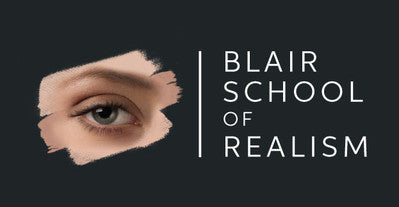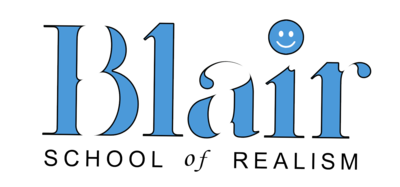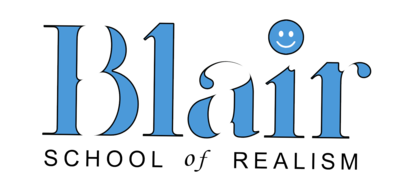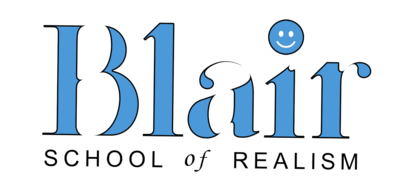Do you want more control
of your airbrush?

Do you want to build a strong foundation with your airbrush?
Perhaps you are searching for the basic set of skills you’ll to handle future airbrush challenges.
Bad airbrush habits die hard.
Good airbrush habits ensure success.

You need
an advantage
Perhaps you are tired of seeing all the amazing art posted on social media and want to create something equal to or better than the best that’s out there.
Imagine being able to paint whatever you want as realistically as you please, with flawless technique.

If you want to be the best you can be, you need to train with the best.
Why not train at the best airbrush school in the world?
Visualize your
success, and
reach for the
stars!
You could spend years (or more likely, decades) trying to unlock all the secrets of airbrushing. Now it’s possible for you to gain control and understanding of your airbrush in a fraction of the time that it would take if you practiced it on your own. One day with us is all you'll need to get started

What you will learn
01
Airbrush Types
You will learn about the various types of airbrushes and how they work. Demonstration will be given on disassembly and reassembly. Its essential to be able to take apart your airbrush, and put it back together again correctly. If you don’t do it right, you will cause damage. We will show you how to avoid damaging your airbrush.
02
Cleaning & Maintenance
Most airbrush users clean their airbrush incorrectly. We wil show you how easy it is to clean it correctly.
03
Position
Not only is hand position important, but so is posture. You will learn the right way to position yourself for great airbrush control.
04
Learn best way to Hold your airbrush for predicable control and consistent marks
Dru holds his airbrush differently from most other artists, and perhaps that gives him an advantage. Learn his unconventional approach.
05
Strokes
Learn the 5 most important mark making variables
06
Drills
Essential practice drills to help you grow every day. These will come in handy for every project
07
Controlling Edges
Essential for getting the best painting results. is one of the top 5 keys to painting realism. Learn to distinguish between hard and soft edges and how to achieve each
08
Freehand airbrushing
There are situations where only freehand airbrushing will serve the painting.
09
Masking
Use of frisket (masking film), paper, tape, plastic, or found objects to create various edges
10
Overspray and underspray
Learn about the differences, and how it can wreck your day or how it can work to your benefit.
11
Bounce techniques
Master the "Bounce" Technique and the importance of "Ghosting"
12
Dru’s "Flip" technique
Use it for Airbrushing or sketching with a pen or pencil. This method can be extremely useful for transferring images to your surface and can take years off of your learning curve
13
Triggering
Triggering is by far, the hardest hurdle for self-taught airbrush artists to master. Learning to spray in smooth even coats with continuous air flow is accomplished by turning the flow of paint on and off while keeping the air flowing, and while it is simple in concept, it is not intuitive to most new airbrush artists learning on their own.
14
Layout and composition
This is the most important foundation of any painting, yet it is the most often overlooked. Here you will learn how to position an element in its environment and make use of negative space.
15
Freehand Texture
Texture can be tricky with the airbrush because the airbrush delivers, by nature, a soft line. We will show you how to tighten up those edges to create the textures you desire.
16
Freehand skin
Skin texture can be a bit challenging to render. We will show you the differences, and how to manage them.
17
Seeing past the obvious
Most people paint the most obvious elements first, such as shadows, and gradients, but that practice can often cause difficulties with the painting in later steps. We will show you how to avoid those pitfalls.
18
Opaque vs Transparent paint?
There are a lot of opinions as to which is better. The answer is that each possesses unique characteristics which need to be considered first. You will learn all the differences, and when and why to use each.
19
Blending colors
The world is full of subtle transitions as colors fade into other colors. We will show you how to blend colors perfectly with the airbrush.
20
The most important stroke
In the world of automotive and t-shirt art, the dagger stroke reigns supreme. Not so for illustration, We will show you which is the most important stroke you can make, and why.
21
Managing edges and transitions
A challenging aspect of freehand airbrushing is controlling edges. Adjusting existing edges is often necessary, but can be a bit tricky. We will teach you how to change the sharpness or softness of an edge, even after you’ve created it.
22
How to troubleshoot your airbrush
This will be one of the most valuable lessons of your class. Sooner or later (probably sooner) your airbrush will malfunction. In this class, you will learn how to quickly identify and fix any problem with your airbrush.
23
Drills and more drills
You will learn exercises to practice that are vital to gaining airbrush control, so you can advance more quickly toward your desired goals.
State of the Art Classroom
unlike any other on the planet
Color corrected lighting. Central Ventilation
On-site lodging on a 120-acre campus
nestled in a National Forest

What students are saying

I attended Dru's workshop with the hope of learning to paint, I left with the ability to "see" and a system that allowed me to develop my own understanding of painting and colours. Your system has given me the freedom to explore my own creativity.
Paul MacDonald
(Airvengers) Australia

Dru's teachings showed me how to create great detail and gave me the ability to achieve PHOTOREALISM in my artworks. Thank you for pioneering the world of photorealism in airbrushing, I doubt I would have got here without your long nights and many experiments .
David Naylor
Spain
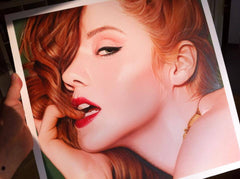
Dru's workshop influenced the way I paint and gave me some new concepts, knowledge and skills to implement into the way I worked today I recommend it!
Mitch Lowther
(Airbrush tutor) Australia
Why should you take this class? Consider your options
1. You could give up on your dreams and continue doing what you are doing, but let's be frank. You would not have continued reading up to this point if you wanted that. You are here because you believe that you deserve to be a better artist than what you are now. You aren’t the kind of person who’s going to settle for mediocrity.
2. You could try practicing on your own hoping to figure it out someday. Its very difficult and time-consuming without all the shortcuts that we could show you, but its an excellent choice if you have all the time in the world.
3. Enroll in this course and enjoy the benefits of step by step guided instruction. You get what you need without wasting years or possibly a lifetime of guessing. If you don’t have time to travel to our workshops, try our Classroom in a box series and learn from home.


Our
Guarantee
We are so sure that we offer the best airbrush course in the world that we are willing to offer you tuition money back if you don’t notice an immediate improvement in your art, and in the way you see the world after taking this course.
Virtual Classes
We offer a virtual Foundations Day before some of our main workshops. You may choose to enroll in the both the Foundations Day and the Workshop, or take the Foundations Day as a stand-alone course. For more information about Virtual classes click here.

On using photographic reference
You might assume that our workshops are about copying photographs, but in reality, these workshops are about learning to see.
True, we use photographs as a guide for practicing techniques, and to measure our success, but the end product of each of these workshops is for the student to understand and see the world differently, especially when it comes to color.
This gives the student the power to create or re-create reality with stunning photorealism, and at a level no other airbrush workshop in the world offers.Once you can paint photorealistically, you can paint in any style you please.
All artists plagiarize from nature. We take our inspiration from the visual world around us and re-create it on board, metal, or canvas. At the Blair School, we would like to show you how to do it more successfully
